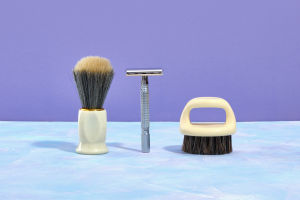Vinyl records are a tangible format for music that has experienced a resurgence in popularity over recent years.
Made from a mixture of polyvinyl chloride, these discs are crafted to hold sound waves in a physical form.
The process of recording onto a vinyl record involves engraving the sound onto the surface in a spiral groove. When a vinyl record is played on a turntable, a stylus, or needle, follows these grooves, converting the mechanical vibrations into electrical signals, which are then amplified to produce sound.
The warm, rich tones produced by vinyl have captivated audiophiles, who often argue that this format offers a more authentic listening experience compared to digital alternatives.
In contrast, Compact Discs (CDs) use a completely different technology for storing music. CDs are made from a polycarbonate plastic base, coated with a reflective layer, and encoded with digital data. The music is stored as a series of binary codes, which a CD player reads using a laser.
This digital format allows for a cleaner sound and the ability to easily skip tracks or replay sections of a song without any physical wear on the medium. While CDs have the advantage of convenience and durability, they lack the distinct character that vinyl records provide.
One major difference between vinyl records and CDs lies in their sound quality. Vinyl records often deliver a warmer sound due to their analog nature, capturing the nuances of music that some listeners feel are lost in the digital conversion process of CDs.
Many enthusiasts claim that the imperfections inherent in vinyl, such as pops and clicks, add to the listening experience, creating a sense of nostalgia and authenticity. CDs, on the other hand, provide a pristine audio quality, free from these imperfections, which some may prefer for clarity and consistency.
Another distinction is the physical experience associated with each format. Vinyl records come in large, colorful sleeves that often feature intricate artwork, making them visually appealing and collectible.
The act of playing a vinyl record involves a more ritualistic approach: carefully removing the record from its sleeve, placing it on the turntable, and gently lowering the stylus.
This tactile experience connects listeners to the music in a way that simply pressing play on a CD player does not. For many, the physicality of vinyl enhances their appreciation of music, turning listening into a more immersive experience.
Furthermore, the lifespan and durability of these formats vary significantly. Vinyl records can be susceptible to scratches and warping if not stored or handled correctly. They require careful maintenance to ensure optimal sound quality.
In contrast, CDs are generally more resilient to wear and tear, though they can be prone to scratches that might affect playback. This durability makes CDs a more practical option for some users, especially those who prefer a hassle-free listening experience.
Additionally, the way music is consumed has evolved alongside these formats. In the past, vinyl was the primary means of distributing music, with people purchasing albums as a complete experience.
The advent of CDs introduced a shift towards single tracks, leading to a change in how music is marketed and enjoyed. Today, with the rise of digital streaming services, the consumption of music has become more instantaneous and accessible than ever.
Despite this shift, vinyl records have carved out a niche market, with many artists releasing new albums on vinyl, recognizing the format's unique charm and appeal.
While both vinyl records and CDs serve the same fundamental purpose of delivering music, they differ greatly in their construction, sound quality, physicality, and the experience they offer.
Vinyl records are celebrated for their warmth and authenticity, providing a nostalgic connection to music, while CDs offer clarity and convenience in a digital age.
Each format has its dedicated following, reflecting the diverse preferences of music lovers. As technology continues to evolve, the enduring appeal of vinyl highlights the importance of both sound quality and the emotional connections we forge with music.


